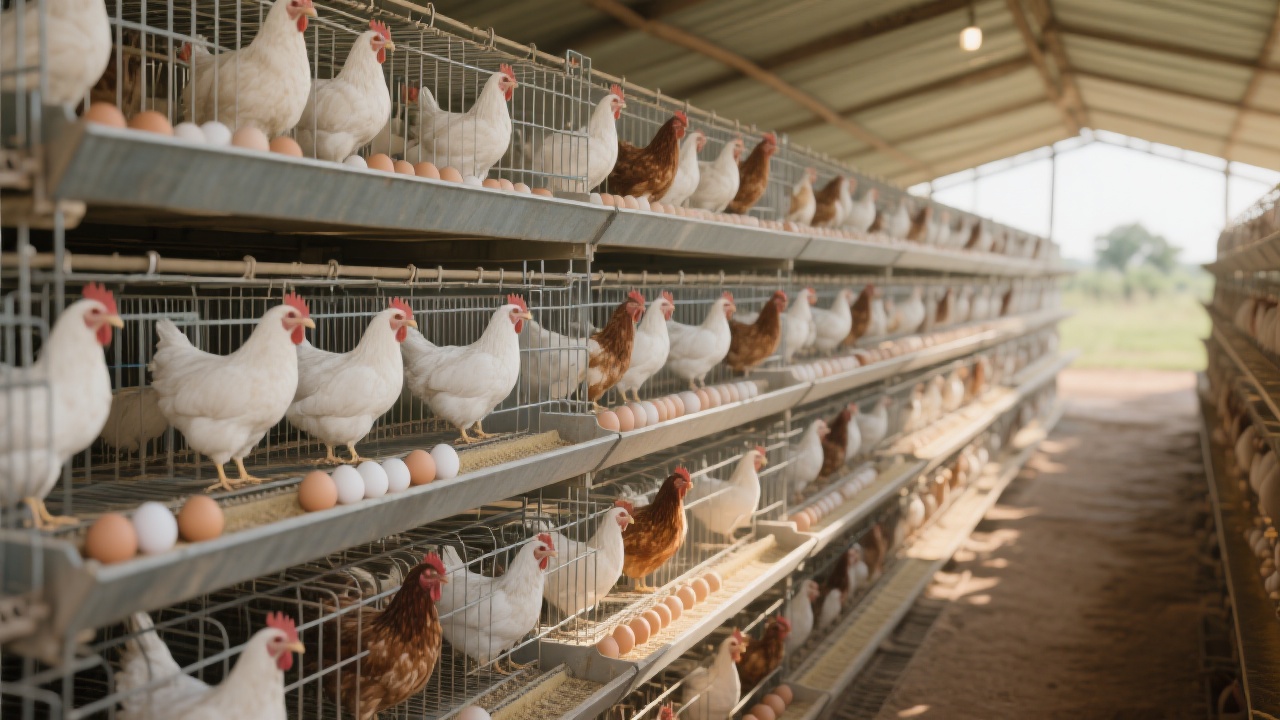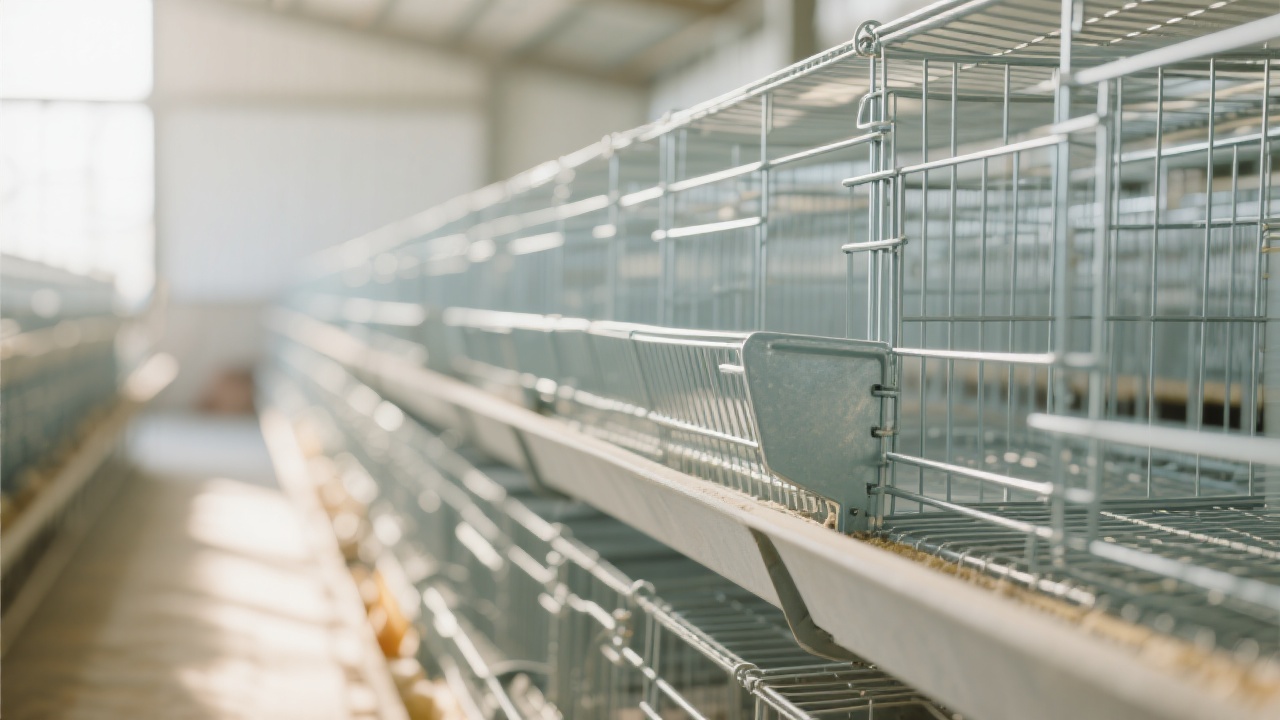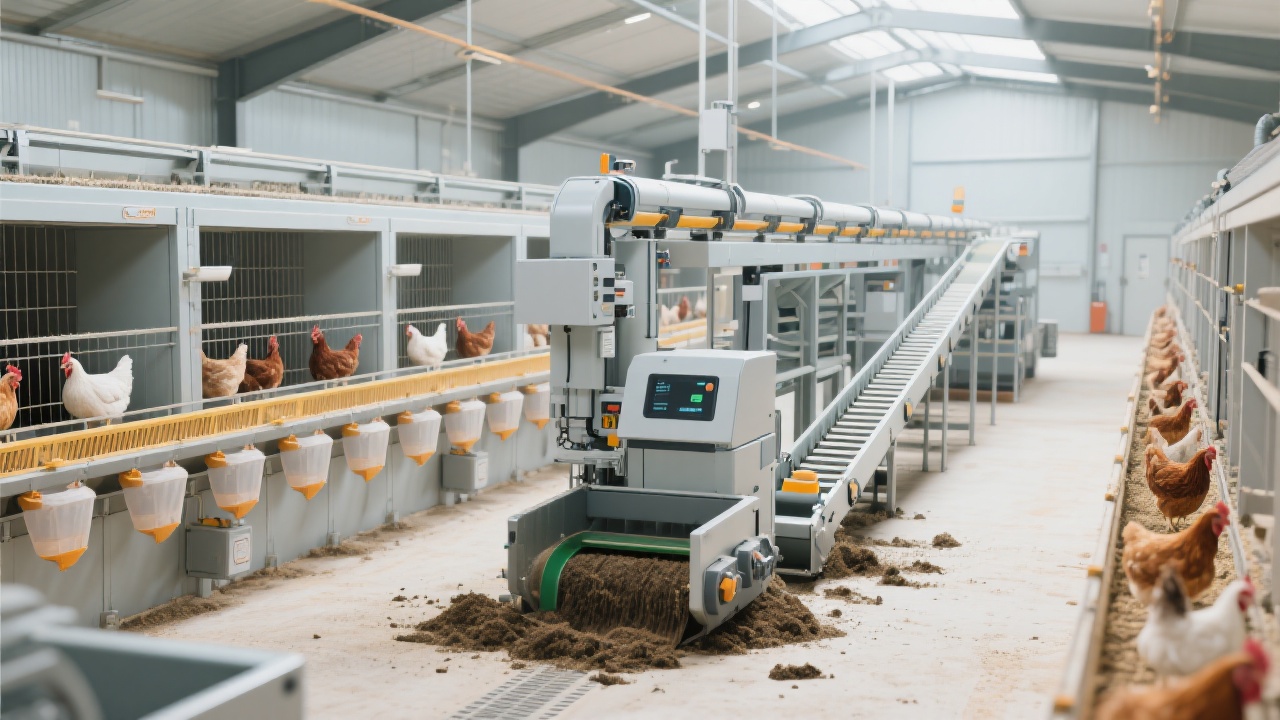
In the large - scale poultry farming industry, traditional manual egg collection and manure cleaning methods have long been a headache for farmers. Manual egg collection is not only time - consuming and labor - intensive, but also has low efficiency. On average, a worker can collect eggs from about 500 chickens per hour. This means that for a farm with 10,000 chickens, it would take at least 20 hours of continuous work by a single worker to complete one round of egg collection. Moreover, manual collection is prone to egg breakage, with an average breakage rate of about 3%.
Manual manure cleaning also has many problems. If manure is not cleaned in time, it will release a large amount of ammonia and other harmful gases, which will not only affect the air quality in the chicken house but also pose a threat to the health of chickens. The ammonia concentration in the chicken house without timely manure cleaning can reach 20 - 30 ppm, which is much higher than the recommended safe level of 10 ppm. In addition, the accumulation of manure can also breed a large number of bacteria and pests, increasing the risk of disease transmission in the chicken flock.

The H - type layer chicken cages produced by Zhengzhou Livi Machinery are equipped with an advanced automated egg collection line. The design of the egg sliding angle is a key factor in ensuring efficient egg collection. Through scientific calculations and practical tests, the optimal egg sliding angle is set at 7 - 8 degrees, which can ensure that eggs can smoothly roll onto the egg collection belt without causing damage.
The speed of the egg collection belt is also precisely controlled. The normal operating speed is set at 0.3 - 0.5 meters per second, which can ensure that eggs are transported in an orderly manner and avoid collisions and breakages. The egg collection belt is made of high - quality materials with good flexibility and wear resistance, which can ensure long - term stable operation.
The manure cleaning system of the H - type chicken cages adopts a timing control mechanism. It can be set according to the actual situation of the chicken farm, usually cleaning the manure once every 6 - 8 hours. This can ensure that the manure in the chicken house is always kept at a low level, reducing the release of harmful gases.
At the same time, the manure cleaning system is also linked with the ventilation and temperature control system. When the manure cleaning system is working, the ventilation system will be automatically strengthened to quickly discharge the harmful gases generated during the manure cleaning process. The temperature control system will also adjust the temperature in the chicken house in time to ensure that the chickens are in a comfortable environment. For example, when the manure is being cleaned, the ventilation volume can be increased by 20 - 30% to quickly reduce the ammonia concentration in the chicken house.

| Number of Chickens | Recommended Configuration |
|---|---|
| 5,000 - 10,000 | One set of small - scale automated egg collection and manure cleaning system, with a single - lane egg collection belt and a small - power manure cleaning machine |
| 10,000 - 20,000 | One set of medium - scale automated egg collection and manure cleaning system, with a double - lane egg collection belt and a medium - power manure cleaning machine |
| 20,000 - 30,000 | One set of large - scale automated egg collection and manure cleaning system, with a triple - lane egg collection belt and a large - power manure cleaning machine |
The most common faults in the automated egg collection line are egg jams and blockages. Egg jams usually occur at the junction of the egg sliding plate and the egg collection belt. This is often caused by eggs with abnormal shapes or improper egg sliding angles. By adjusting the egg sliding angle and regularly inspecting the eggs for abnormal shapes, the egg jam rate can be reduced from the original 1% to less than 0.1%.
Blockages in the manure cleaning system are usually caused by the accumulation of large pieces of manure or foreign objects. Regularly cleaning the manure cleaning equipment and installing filters can effectively prevent blockages.

Employee training is crucial for the normal operation of the automated egg collection and manure cleaning system. Employees should be trained on standardized operating procedures, including how to start and stop the system, how to adjust the parameters of the system, and how to troubleshoot common faults. In addition, video and graphic tutorials can be provided to help employees better understand and master the operation skills.
Many farms that have adopted the H - type layer chicken cages and the automated egg collection and manure cleaning system have given positive feedback. They reported that after using this system, the labor cost has been significantly reduced, the egg collection efficiency has been greatly improved, and the egg breakage rate has been reduced. For example, a farm in Henan Province found that after using this system, the labor cost was reduced by 50%, and the egg collection efficiency was increased by 3 times.
If you are interested in learning more about the H - type layer chicken cages and the automated egg collection and manure cleaning system, or if you have any questions about large - scale poultry farming, please feel free to leave a message below. Click here to get more detailed information and solutions!

